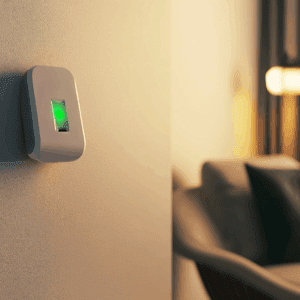The bathroom is one of the most dangerous rooms in the home for seniors. Slippery floors, awkward steps, and poor lighting can all contribute to falls, which are a leading cause of injury among older adults.
But the good news? You don’t need a full renovation to make the space safer. With just a few small changes, you can dramatically reduce risk and create a more accessible, confidence-building bathroom environment.
Here’s a practical guide to improving bathroom safety - starting today.
Why Bathroom Safety Matters
Bathrooms are often small, slippery, and filled with hard surfaces. According to the CDC, nearly 80% of falls at home happen in the bathroom, and older adults are especially vulnerable.
Falls can lead to serious injuries like fractures or head trauma, and for those living alone or with cognitive impairment, the bathroom can become a source of fear.
👉 Related reading: Top Fall Prevention Tools for Seniors
1. Install Grab Bars
One of the most effective (and affordable) upgrades you can make is to install grab bars near the toilet, shower, and bath.
- Use vertical grab bars to assist with stepping in and out of the tub
- Position horizontal bars beside the toilet for added stability
- Choose textured, non-slip models for extra grip
Grab bars give users something solid to hold onto during moments of vulnerability - reducing falls and boosting confidence.
2. Use Non-Slip Mats and Flooring
Wet tile is a serious hazard. To reduce risk:
- Place non-slip mats in the shower and by the sink
- Secure bathroom rugs with grippy underlays or remove them altogether
- If possible, choose non-slip flooring when updating the space
👉 Related reading: Creating a Dementia-Friendly Home: Practical Tips
3. Improve Lighting
Good visibility helps prevent accidents, especially during nighttime bathroom trips.
- Use motion-activated night lights in the hallway and bathroom
- Choose bright, white lighting to reduce shadows
- Install a light switch near the door that's easy to reach
Poor lighting can lead to missteps, especially for seniors with declining vision or cognitive confusion.
4. Raise the Toilet Seat
Standard toilet heights can be too low for seniors with joint pain or balance issues. A raised toilet seat attachment makes sitting down and standing up much easier - and safer.
Some models also include side handles, providing even more support.
👉 Take a look at EA Mobility's article on The Importance of A High Toilet Seat
5. Add a Shower Chair or Bench
Standing for long periods can be exhausting or dangerous for older adults. A shower chair or transfer bench allows for safe seated bathing.
Pair it with a handheld shower head for maximum ease and independence.
6. Consider Lever-Style Faucets
Twisting knobs can be painful for those with arthritis or limited hand strength. Lever-style taps or touch-free options make it easier to control water temperature without strain.
They’re a small upgrade that makes daily routines more accessible.
7. Keep Essentials Within Reach
Bending or stretching in the shower is risky. Use shower caddies or wall-mounted dispensers to keep shampoo, soap, and other essentials at arm’s height.
Declutter the space by removing products not in regular use.
8. Use Visual Cues for Dementia Support
For people with cognitive impairment, the bathroom can become disorienting. A few visual changes can help:
- Use contrast colors between walls, toilet, and floor
- Place signage or labels (e.g., “Toilet,” “Shower”) if needed
- Avoid mirrored cabinets if reflections cause confusion
👉 Related blog: Why Emotional Wellbeing Is Critical for Cognitive Health
9. Leverage Technology for Peace of Mind
If a loved one is living alone or managing cognitive decline, tools like Elli Cares can offer extra protection:
- Set reminders to prompt bathroom-related tasks like hygiene or hydration
- Monitor behavior changes - such as bathroom inactivity that could signal a fall
- Stay connected with location-based alerts if a fall risk is suspected
You don’t need to completely remodel the bathroom to make it safer. A few thoughtful, low-cost changes can go a long way in reducing falls and making the space more comfortable and accessible.
Bathroom safety isn’t just about physical protection - it’s about giving seniors the confidence to manage independently with dignity.
At Elli Cares, we’re here to support safer aging at home through thoughtful technology and compassionate care. If you’re concerned about safety at home, our app and future AI-driven safety tools may offer even more reassurance.
👉 Learn more at www.elliapp.co








